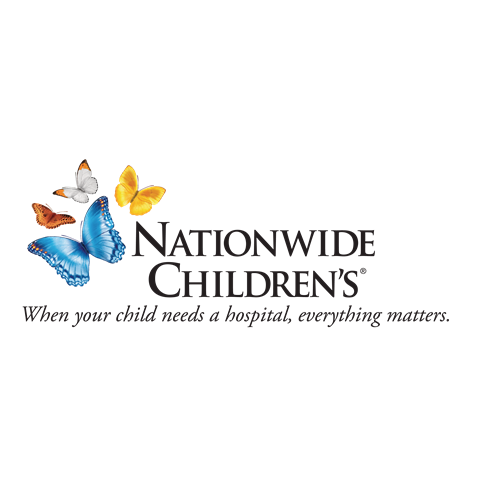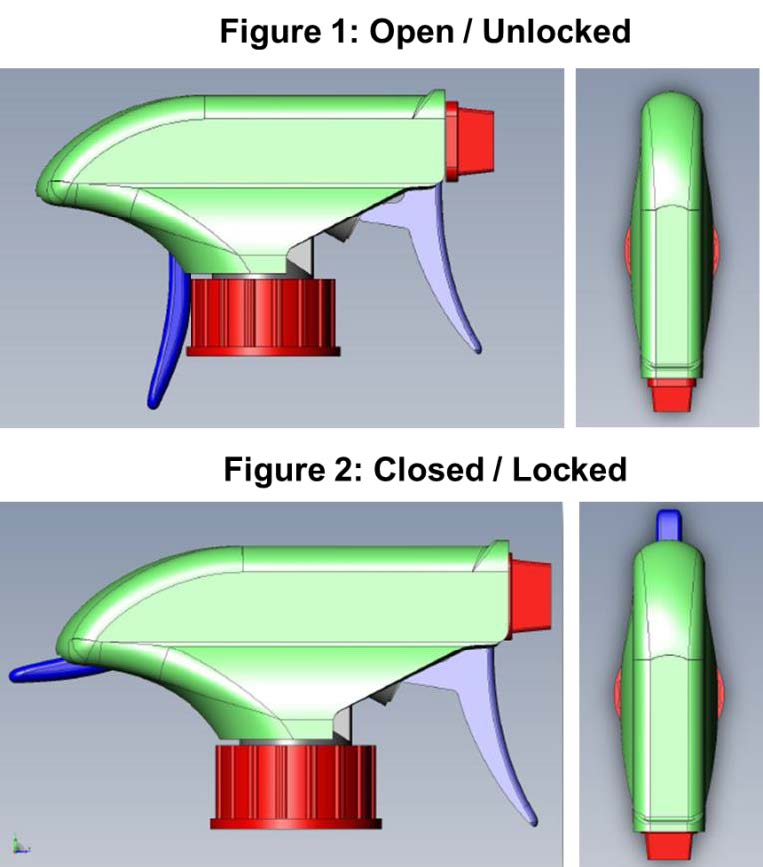Available Technologies
# of Displayed Technologies: 10 / 121
Applied Category Filter (Click To Remove): Technology Types
Categories
 Methods for Anticipating Antibiotic Sensitivity in Bacteria Released from Biofilm Residence
Methods for Anticipating Antibiotic Sensitivity in Bacteria Released from Biofilm Residence
TS-002176 — In order to effectively treat bacterial infections, a clear understanding of the bacterium’s antibiotic sensitivity is needed. Researchers at Nationwide Children’s Hospital’s Center for Microbial Pathogenesis created a new method to assist in prescribing antibiotics for infections caused by a biofilm to reduce the dosage and the length of antibiotic treatments.
Depending on the bacteria’s physiologic state the antibiotic sensitivity can be highly variable. Originally, bacteria were believed to exist in two physiologic states: planktonic and biofilm. However, the research team based their methods on two additional but transient physiologic states they…
- College:
- Inventors: Bakaletz, Lauren; Goodman, Steven
- Licensing Officer: Murrah, Kyle
 Neuregulin-1 as Protection from Respiratory Viral Infections
Neuregulin-1 as Protection from Respiratory Viral Infections
TS-002168 — Children have a higher chance of morbidity and mortality from respiratory viral infections. Severe respiratory viral infections like Respiratory Syncytial Virus (RSV) and Parainfluenza viruses can lead to the development of asthma in patients. Clinical researchers at Nationwide Children’s Hospital found that neuregulin-1 (Nrg-1) may be an effective and protective treatment for patients diagnosed with severe respiratory viral infections. Their successful models with mice showed that Nrg-1 may prevent post-viral airway disease and reduce mortality if further studied and applied to human patients in the future.
- College:
- Inventors: Grayson, Mitchell; Hussain, Rehan
- Licensing Officer: Murrah, Kyle
 AAV Vectors Containing U7small Nuclear RNA (U7snRNA That Interferes With The CTGexp or Silences DMPK)
AAV Vectors Containing U7small Nuclear RNA (U7snRNA That Interferes With The CTGexp or Silences DMPK)
TS-001229 — Mutations in the Myotonic Dystrophy Protein Kinase gene (DMPK) cause an autosomal dominant inherited disease referred to as Myotonic Dystrophy. Myotonic Dystrophy affects more than 1 in 8,000 people worldwide. Myotonic dystrophy results in progressive muscle weakness, stiffness and wasting. Currently, here are no treatments for this disease. A team of researchers at Nationwide Children’s Hospital have designed short hairpin constructs of AAV-shRNA which can be used to silence DMPK mRNA and therefore potentially treat myotonic dystrophy.
- College:
- Inventors: Wein, Nicolas
- Licensing Officer: Eidahl, Jocelyn
 Second Generation Closed Seeding System for the Tissue Engineered Vascular Graft
Second Generation Closed Seeding System for the Tissue Engineered Vascular Graft
TS-001227 — A team of physicians at Nationwide Children's Hospital have developed a process to improve the acceptance of implanted vascular grafts. This Tissue Engineered Vascular Graft (TEVG) is patient-specific. It seeds patient cells onto a biodegradable tubilar scaffold, which is designed to dissolve with hydrolysis so that only the growing vessel remains. This system, the Closed Seeding System, combines patient imaging data, 3D-printing capabilities, and efficient collection and subsequent seeding of patient cells onto the TEVG scaffolding.
- College:
- Inventors: Breuer, Christopher; Hibino, Narutoshi
- Licensing Officer: Murrah, Kyle
 Sweat Technology for Monitoring Cystic Fibrosis Health and Adherence
Sweat Technology for Monitoring Cystic Fibrosis Health and Adherence
TS-001225 — Cystic fibrosis is an inherited disorder that affects cells that produce sweat and mucus, causing significant damage to the digestive system, lungs, and other organs. A team at Nationwide Children's Hospital has developed a non-invasive monitoring system to track and test a patient with this disease. This technology is a skin patch that measures the metabolomics of the patients sweat to evaluate the clinical health of patients afflicted with cystic fibrosis.
- College:
- Inventors: Hayes, Don; Kopp, Benjamin; Woodley, Frederick
- Licensing Officer: Murrah, Kyle
 Preference Cards and Decision Aid to Facilitate Shared Decision Making in Contraceptive Counseling
Preference Cards and Decision Aid to Facilitate Shared Decision Making in Contraceptive Counseling
TS-001224 — Decks of cards have been used to facilitate knowledge for decades. A team of researchers led by Dr. Elise Berlan have developed a series of cards that combine summaries of contraceptive counciling information and patient preferences. This includes key components of contraceptive preferences which can then be used with a care provider to determine the best form of contraceptive for the patient's preference and decreases the stigma associated with discussing topics like contraceptives as adolecents or young adults.
- College:
- Inventors: Berlan, Elise
- Licensing Officer: Murrah, Kyle
 Machine Learning of Doppler Echocardiographic Coronary Blood Flow
Machine Learning of Doppler Echocardiographic Coronary Blood Flow
TS-001178 — Currently there are few existing methods on coronary flow pattern automation. The DECFA platform fulfills this unmet need by predicting diseased coronary blood flow by integrating previously unutilized data features from (sonographic) Doppler echocardiography measurements, cardiac functional and other physiological data (e.g. heart rate, body weight, etc) using machine learning. The DECFA program is superior to manual intervention as it provides more efficient analysis, more accurately, and can accept raw video files of PW Doppler and Color Doppler B-mode files, applicable on mouse models, potentially applicable to humans. DECFA can analyze raw PW Doppler AND Color Doppler B-Mode AVI video files to calculate overall coronary blood flow and coronary flow reserve, and the separation of each coronary flow pattern into 4 distinct phases representative of the stages in a cardiac cycle.
Benefits:
More efficient analysis over manual intervention, less error than manual intervention, capable of accepting raw video files of PW Doppler and Color Doppler B-mode files, applicable on mouse models, potentially applicable to humans (not yet validated). New features include the analysis of raw PW Doppler AND Color Doppler B-Mode AVI video files to calculate overall coronary blood flow and coronary flow reserve, and the separation of each coronary flow pattern into distinct phases representative of the stages in a cardiac cycle. The machine learning aspect brings state-of-the-art technology to determine whether it may be useful in directly predicting/diagnosing coronary microvascular disease.
Stage of Development:
We are currently in the final stages of completing the data analysis for all of the in vivo coronary and cardiac physiological parameters that will be used to perform the final runs through the machine learning process. We did perform an “interim” analysis using about half of the data, the results of which were promising (inconclusive at this point, but they put the predictive value of coronary flow patterns above 90% for identifying diseased coronary blood flow). This process also uses the whole envelope instead of discrete points of the coronary flow pattern, in addition to the texture-analysis extension. After this process is complete in mice, we plan to obtain human coronary blood flow patterns to determine whether this could be clinically useful beyond research applications.
Potential Applications/Markets:
Our program could be utilized in a research setting for robust, comprehensive, and more efficient analysis of coronary flow patterns in mice measured through Doppler Echocardiography (It solves the problem of large inter/intra observer error and time required for manual analysis). The program could also be used clinically for use in the medical field for the same analysis if adjusted for human use. It could also be used as an add on feature to the VisualSonics Vevo 2100 software for added capabilities in analyzing PW Doppler coronary flow patterns and Color Doppler B-mode files. The parameters that we identify in our program could be potentially useful in clinical diagnostics/machine learning/prediction modeling for better identifying and predicting disease.
Furthermore, we envision that this could be tested and applied to clinical coronary Doppler echocardiograms, with the readout being predictability of coronary microvascular disease based on the machine learning algorithm of coronary flow patterns.
Opportunity/Seeking:
Development Partner
Commercial Partner
Licensing
IP Status:
Know-how based
Copyright
- College:
- Inventors: Trask, Aaron; Bartlett, Christopher; Bossenbroek, Jamie; McCallinhart, Patricia; McDermott, Michael; Ray, Will; Sunyecz, Ian; Ueyama, Yukie
- Licensing Officer: Corris, Andrew
 Child-Restraint Spray-Bottle for Household Cleaning Products
Child-Restraint Spray-Bottle for Household Cleaning Products
TS-001037 — When it comes to the safety of our children, innovation never stops. There have been many improvements to the safety of devices and receptacles that can be toxic or life threatening if consumed or exposed to skin. A team of researchers at Nationwide Children’s Hospital have incorporated this desire for security into a common household product: the spray bottle. Often filled with harmful chemicals, spray bottles remain one of the leading causes of chemical exposure injuries in children. The team at NCH has developed a “two-step authentication” spray nozzle that requires the dexterity beyond that of a small child. This dual trigger approach requires a full grip that prevents kids from accessing the contents of the spray bottle, while remaining easily usable by adults and seniors.
Benefits and Applications:
Inventors anticipate that incorporating this product into households will result in a decline in child injury due to accidental activation of spray bottles.
Stage of Development:
- College:
- Inventors: McKenzie, Lara; Nelson, Nicolas; Roberts, Kristin
- Licensing Officer: Murrah, Kyle
 A Virtual Reality Simulation to Aid in Exposure to Therapy for School Avoidance
A Virtual Reality Simulation to Aid in Exposure to Therapy for School Avoidance
TS-001036 — School can be a daunting experience. Constant motion, public speaking and a new environment can increase anxiety in children, sometimes leading to school avoidance. A team at Nationwide Children’s Hospital has developed a solution, where exposure therapy procedures are combined with modern technology can improve the school experience for people of all ages. Using a Virtual Reality (VR) Simulation, clinicians are able to use the multi-user capability to interact with and guide their patient through new environments such as classrooms, hallways and lunchrooms, as well as scenarios known to trigger increased anxiety such as public speaking or asking for help. Biofeedback components help collect data so that the clinician can adapt the experience to the user. Although targeted for school-aged children, this technology can be modified to treat any person with school or public phobia.
- College:
- Inventors: Huang, Yungui; DeForte, Shelly; Luna, John "John"; Mackner, Laura ; Vickery, Elizabeth
- Licensing Officer: Murrah, Kyle
 RyaBhata: A Shiny R Application for Single Cell Transcriptome Data Analysis and Visualization
RyaBhata: A Shiny R Application for Single Cell Transcriptome Data Analysis and Visualization
TS-001035 — Shiny R is an open source platform that allows a framework to develop online applications. With minimal required background in coding principles, a team of researchers at Nationwide Children’s Hospital were able to display and interact with the analysis made of single-cell transcriptome. Shiny R generates visualizations that include UMAP plots and presents features of single-cell RNA and transcriptomic data without extensive training in R programming. Improvements made on this existing technology includes importing data, cell filtration, principle component analysis, clustering, dimensional reduction, merging datasets, and Graphical user interface (GUI)-based generations of gene expression plots. This significantly improves the visualization and analysis of single-cell transcriptome analysis.
- College:
- Inventors: Manivannan, Sathiyanarayanan ; Garg, Vidu
- Licensing Officer: Murrah, Kyle
